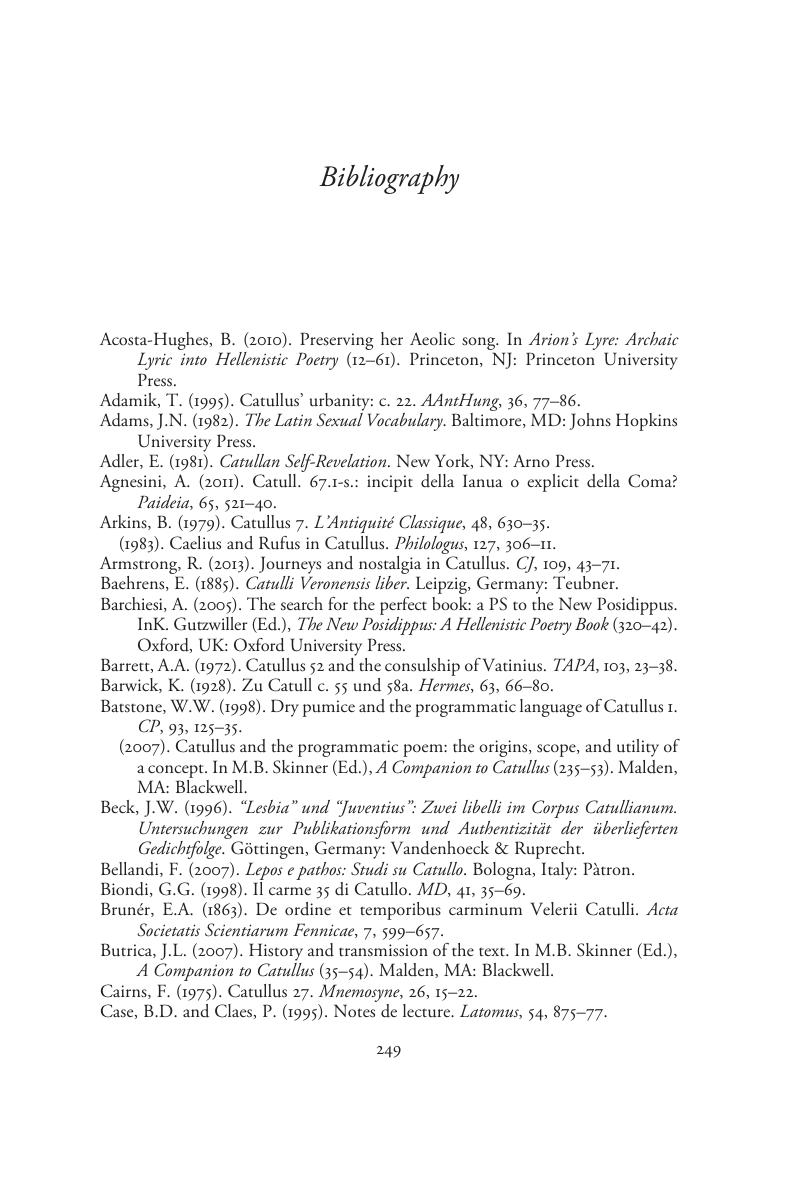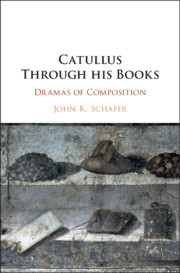Book contents
- Catullus Through his Books
- Catullus Through his Books
- Copyright page
- Contents
- Acknowledgments
- Introduction
- Prolegomenon to the Catullus Problem
- Chapter 1 Ax (poems 52–60)
- Chapter 2 A (poems 1–51)
- Chapter 3 B (poems 61–64) and C1 (65–68b)
- Chapter 4 C2 (poems 69–116)
- Conclusion Two Interpretive Applications
- Bibliography
- Index
- References
Bibliography
Published online by Cambridge University Press: 28 February 2020
- Catullus Through his Books
- Catullus Through his Books
- Copyright page
- Contents
- Acknowledgments
- Introduction
- Prolegomenon to the Catullus Problem
- Chapter 1 Ax (poems 52–60)
- Chapter 2 A (poems 1–51)
- Chapter 3 B (poems 61–64) and C1 (65–68b)
- Chapter 4 C2 (poems 69–116)
- Conclusion Two Interpretive Applications
- Bibliography
- Index
- References
Summary

Information
- Type
- Chapter
- Information
- Catullus Through his BooksDramas of Composition, pp. 249 - 257Publisher: Cambridge University PressPrint publication year: 2020
